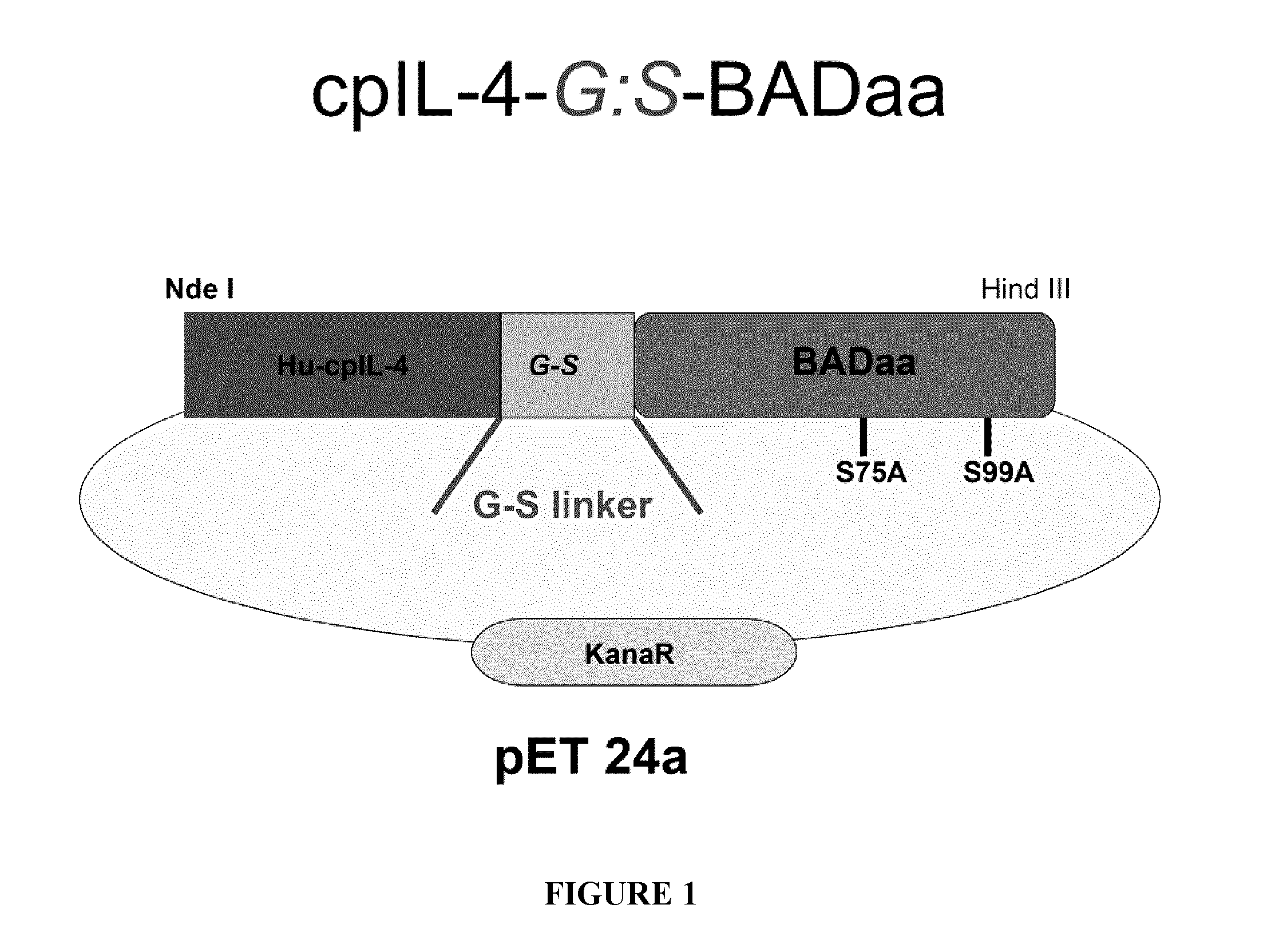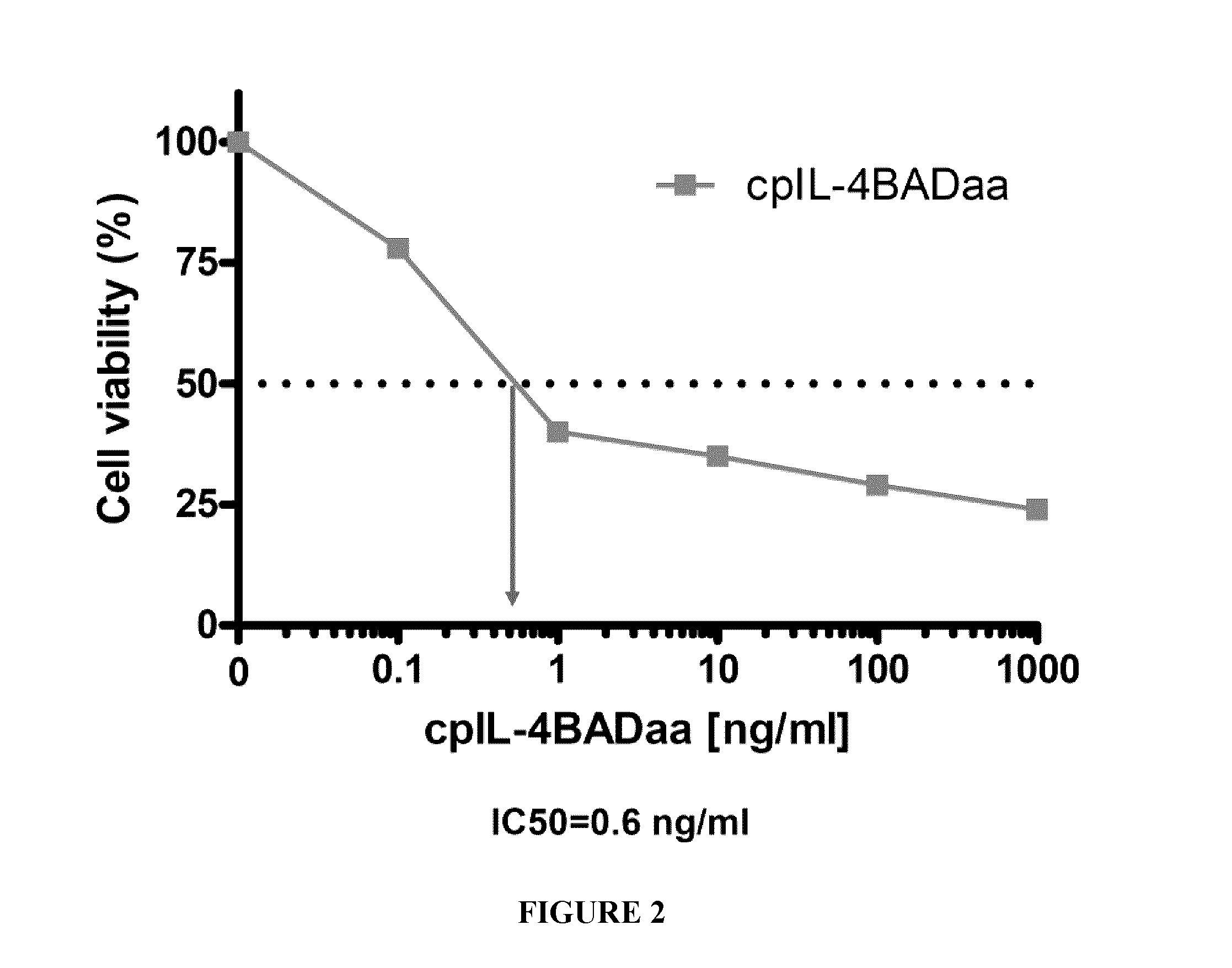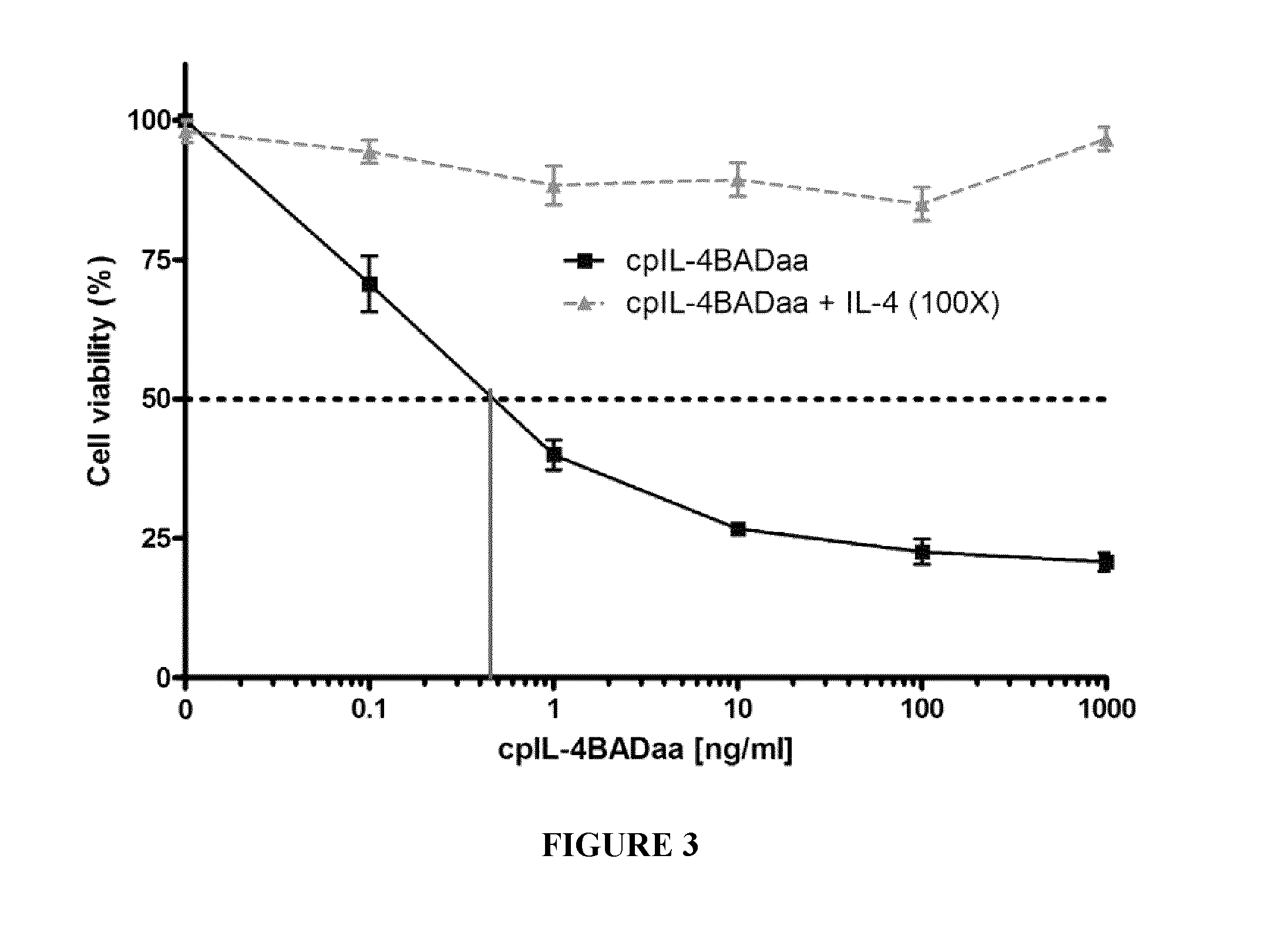Interleukin-4 receptor-binding fusion proteins and uses thereof
a technology of interleukin-4 and receptors, applied in the field of interleukin-4 receptor-binding protein fusion, can solve the problems of limited clinical use of cancer and other hyperproliferative disorders, limited therapeutic value of normal cells, and limitations of their use in the clinic, so as to reduce phosphorylation, inhibit cell survival, and reduce phosphorylation
- Summary
- Abstract
- Description
- Claims
- Application Information
AI Technical Summary
Benefits of technology
Problems solved by technology
Method used
Image
Examples
example 1
[0171]This example describes making circularly permuted IL-4 proteins.
[0172]The coding sequence of IL-4 is designed to be reorganized creating a new amino terminus and a new carboxy terminus. The site of reorganization is selected and coding regions are developed synthetically or using the native sequence as a template. PCR can be used to amplify the separate coding regions and the 5′ and 3′ ends of the separate fragments are designed to overlap, thus allowing for the formation of a new coding sequence in which the newly generated peptide can for example encode a first amino acid that in the native protein may have been the 40th amino acid. Specific examples of making circularly permuted ligands are provided in U.S. Pat. No. 6,011,002.
[0173]The following sequence is used as a reference.
NameIL-4LinkerToxinDescriptioncpIL4-PEMDTTEKETFCRAATASGGPEPE38KDELCircularlyVLRQFYSHHEKDT(SEQ IDpermuted humanRCLGATAQQFHRHNO: 29)IL-4 fused to aKQURFLKRLDRNLPseudomonasWGLAGLNSCPVKEexotoxinANQSTLENFL...
example 2
[0174]cpIL-4-BAD was prepared using standard techniques and tested on IL-4Rα-expressing cancer cells in vitro and on IL-4Rα positive xenograft tumors in an athymic nude mouse model, using cpIL4-PE as a reference. The results indicated that cpIL-4-BAD was effective at killing the cancer cells and at regressing the tumors.
[0175]More specifically, cpIL-4-BAD fusion protein was prepared by transducing BL21(DE3)pLysS bacteria with chimeric plasmid cpIL-4BAD in a pET 24a expression vector (FIG. 1). The freshly transformed bacteria were plated on LB with kanamycin. Colonies were picked and transferred into 1 litre of superbroth enriched with glucose, MgCl2 and kanamycin and the cells were induced with 1 mM IPTG. The growth of the cells was monitored for 6 hours. IL-4-BAD fusion proteins were refolded and purified using a HiTrap Column followed by two rounds of a MonoS column, after which cpIL-4-BAD fractions were evaluated by SDS-PAGE electrophoresis. This strategy yielded about 0.980 mg / L...
example 3
[0181]Six additional IL-4Rα positive cell lines were tested for their sensitivity to the cpIL-4BAD fusion protein and cpIL-4PE under identical experimental conditions. IC50 values were determined by counting the cells using the trypan blue exclusion technique (Table 3).
TABLE 3IC50 values of IL-4Rα positive cell lines.IC50 (ng / mL)Cell LineOrigincpIL-4BADcpIL-4PEYCUT891Tongue11.08.0YCUM862Oropharynx1.10.6KCCOR891Oral Floor0.159.0KCCL871Larynx0.51.5YCUM911Oropharynx0.24.5KCCTCM901Metastasis to the chest1.00.7fluid
PUM
| Property | Measurement | Unit |
|---|---|---|
| Concentration | aaaaa | aaaaa |
| Concentration | aaaaa | aaaaa |
| Concentration | aaaaa | aaaaa |
Abstract
Description
Claims
Application Information
 Login to View More
Login to View More - R&D
- Intellectual Property
- Life Sciences
- Materials
- Tech Scout
- Unparalleled Data Quality
- Higher Quality Content
- 60% Fewer Hallucinations
Browse by: Latest US Patents, China's latest patents, Technical Efficacy Thesaurus, Application Domain, Technology Topic, Popular Technical Reports.
© 2025 PatSnap. All rights reserved.Legal|Privacy policy|Modern Slavery Act Transparency Statement|Sitemap|About US| Contact US: help@patsnap.com



